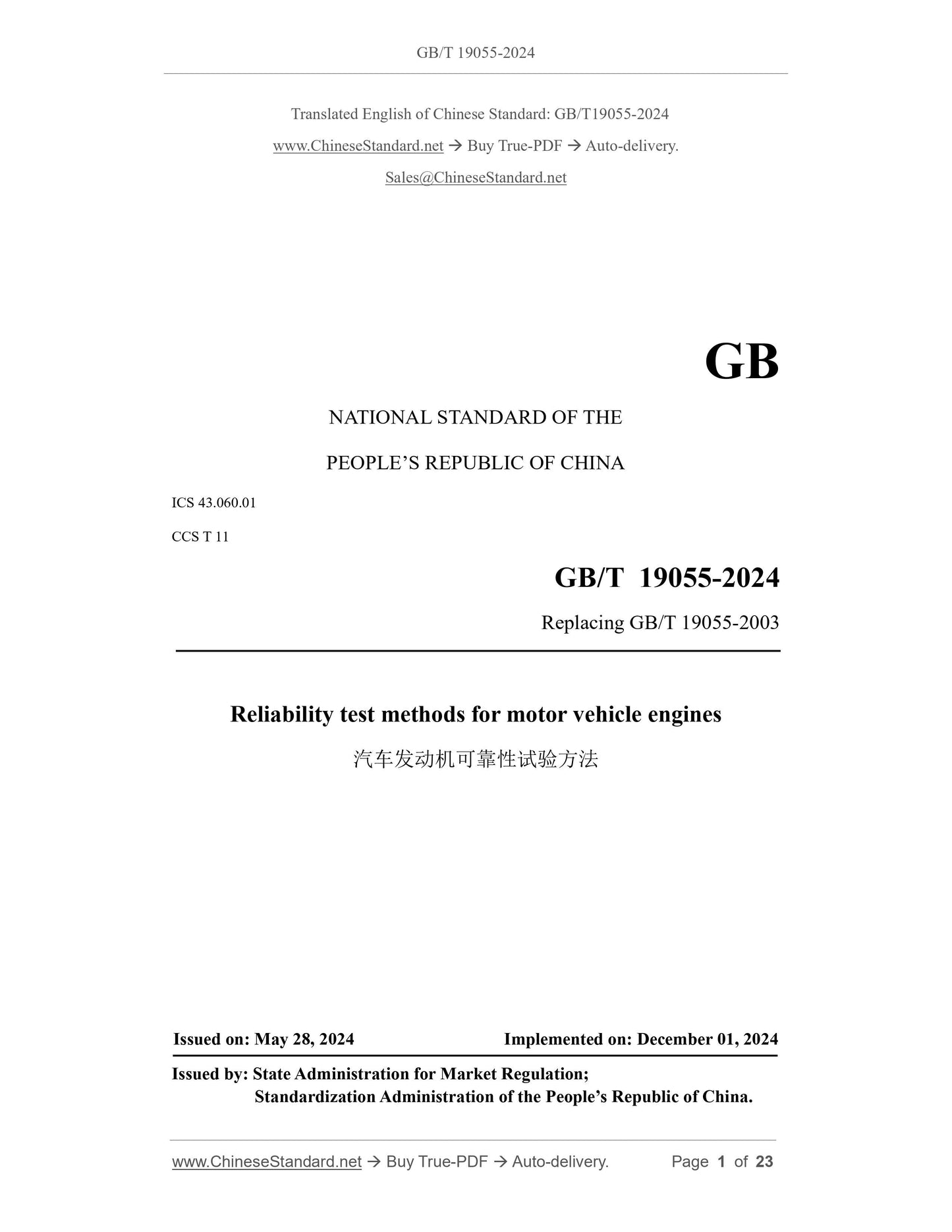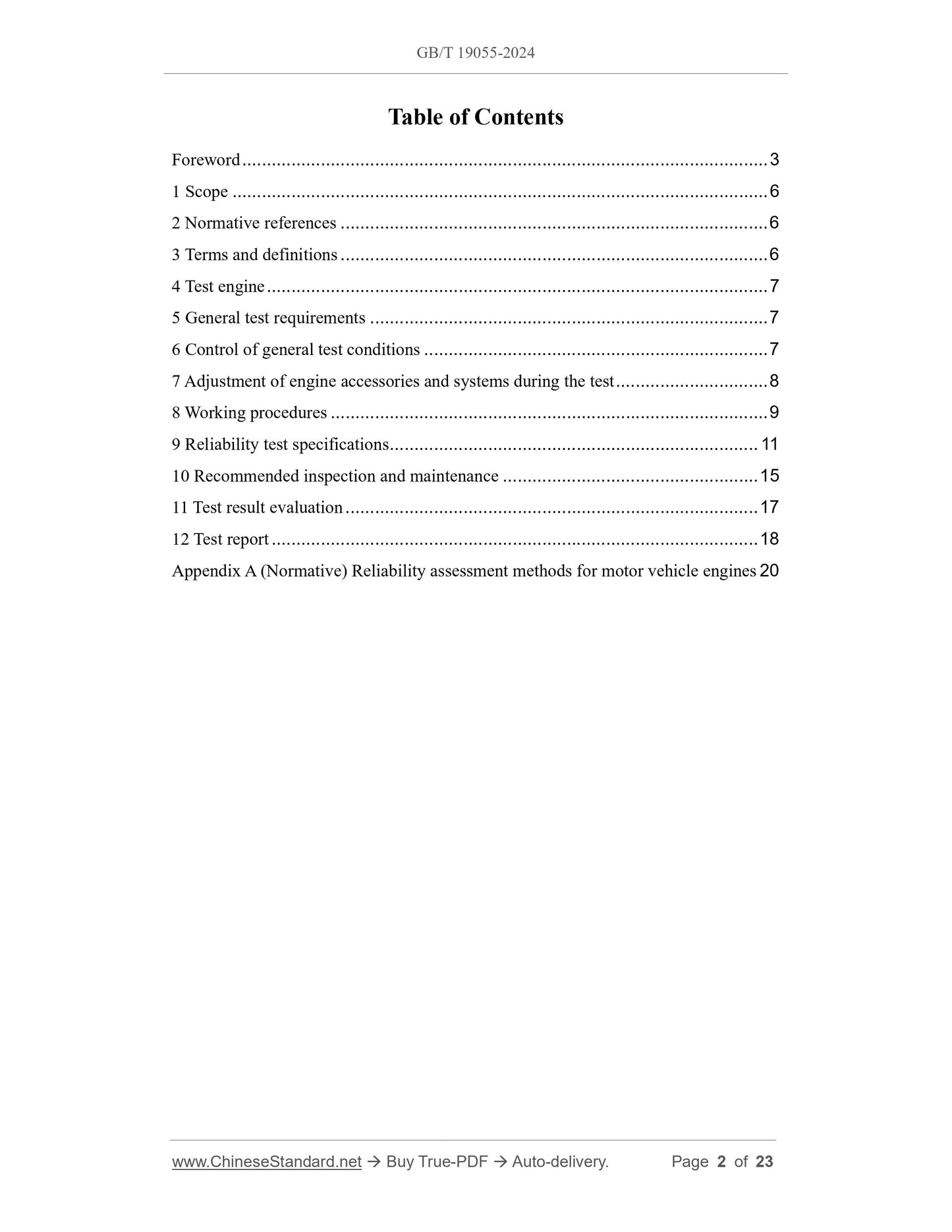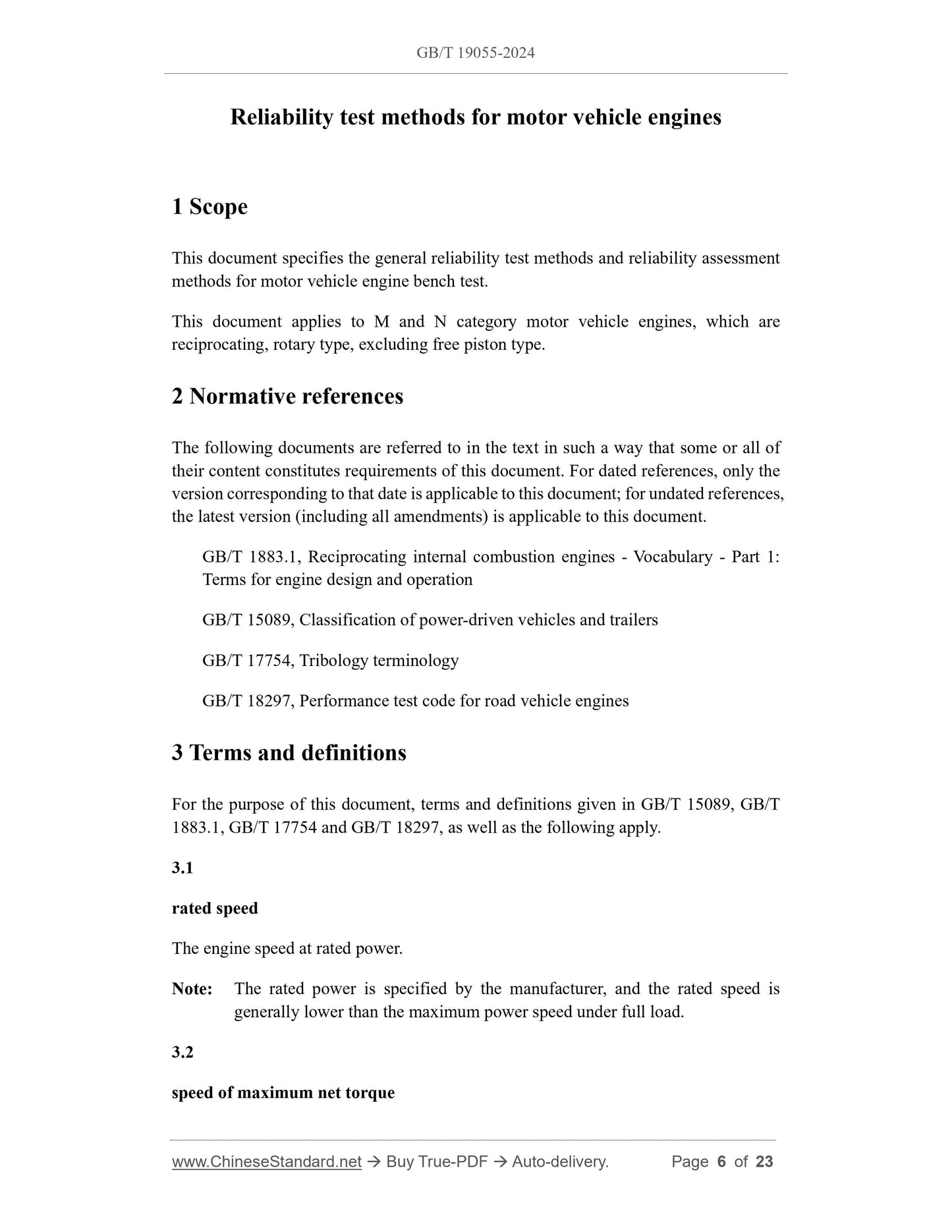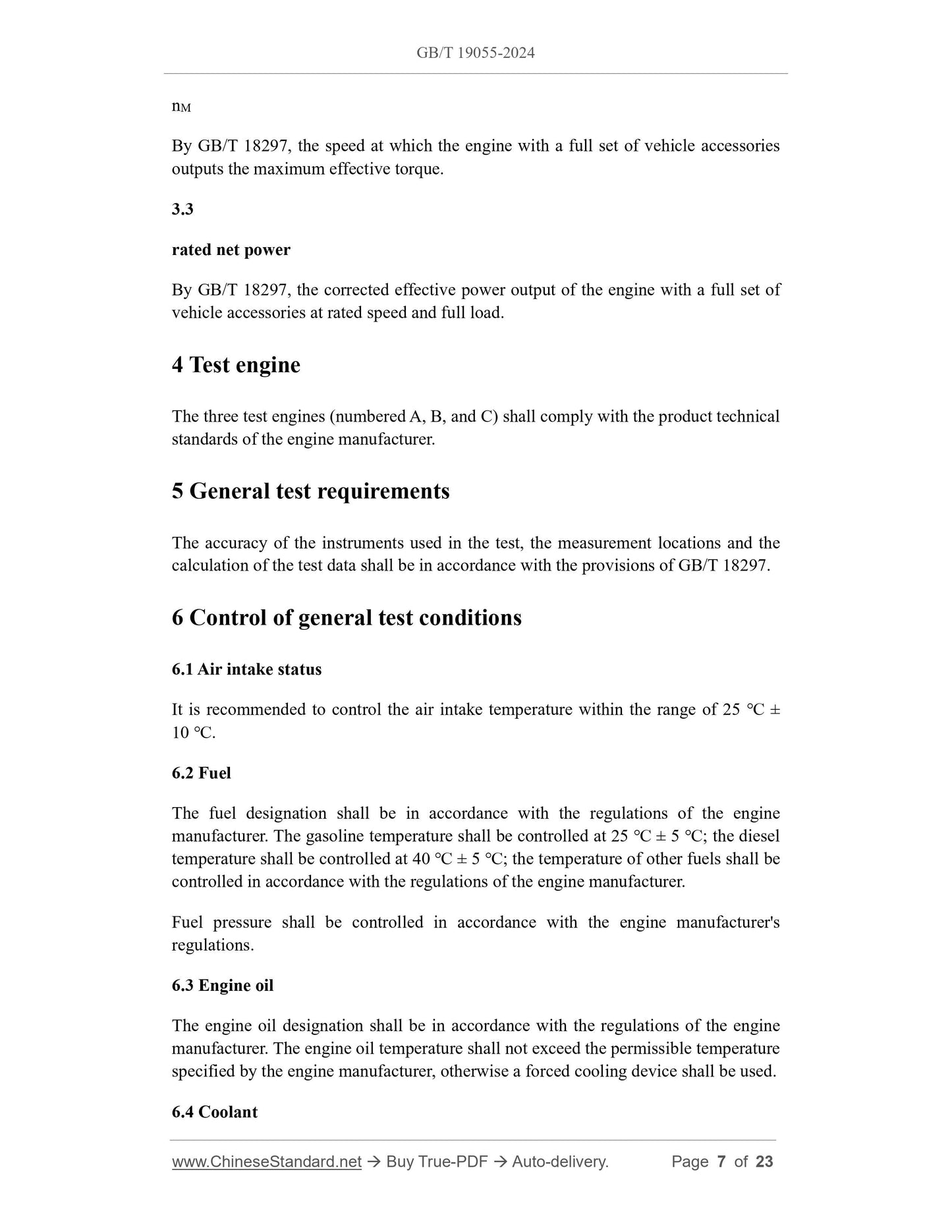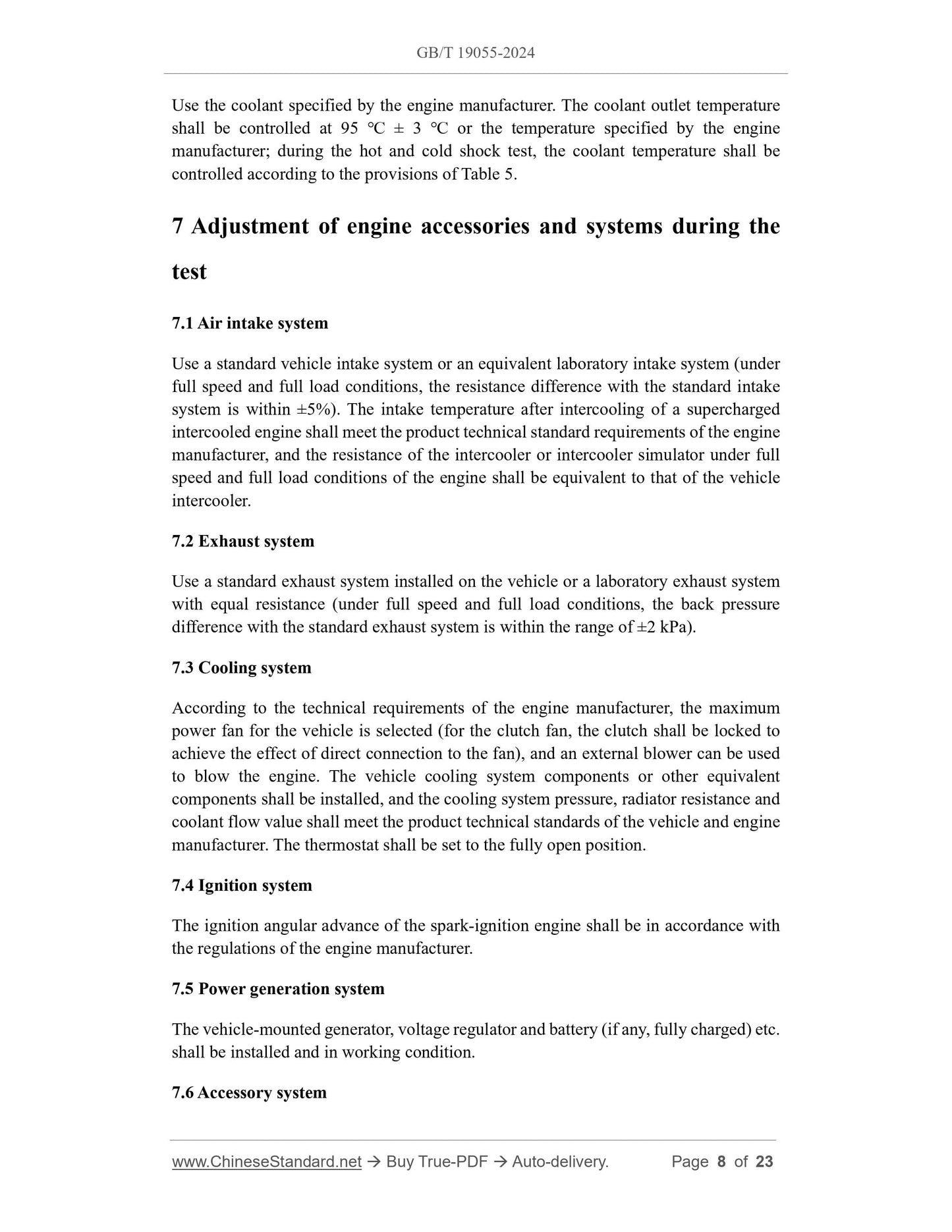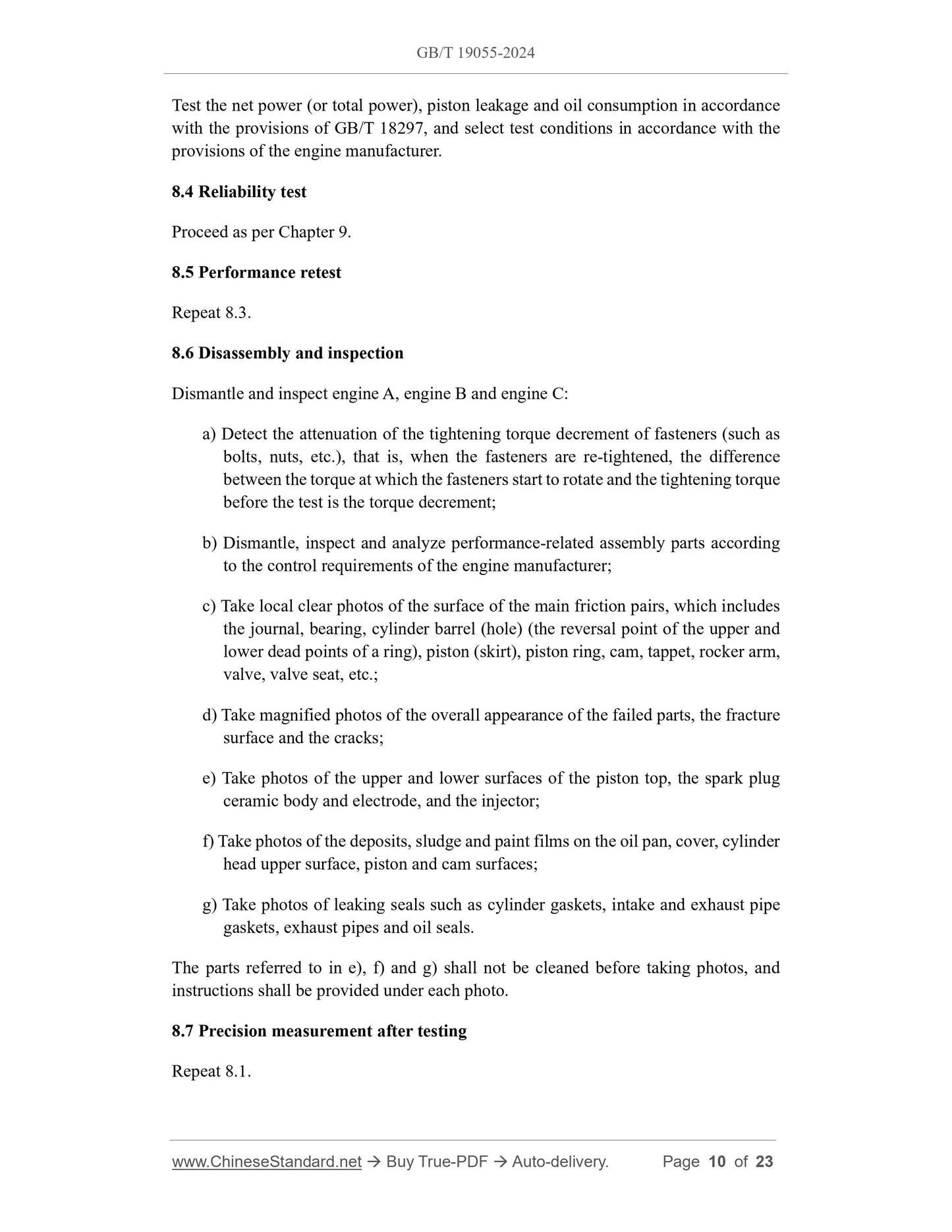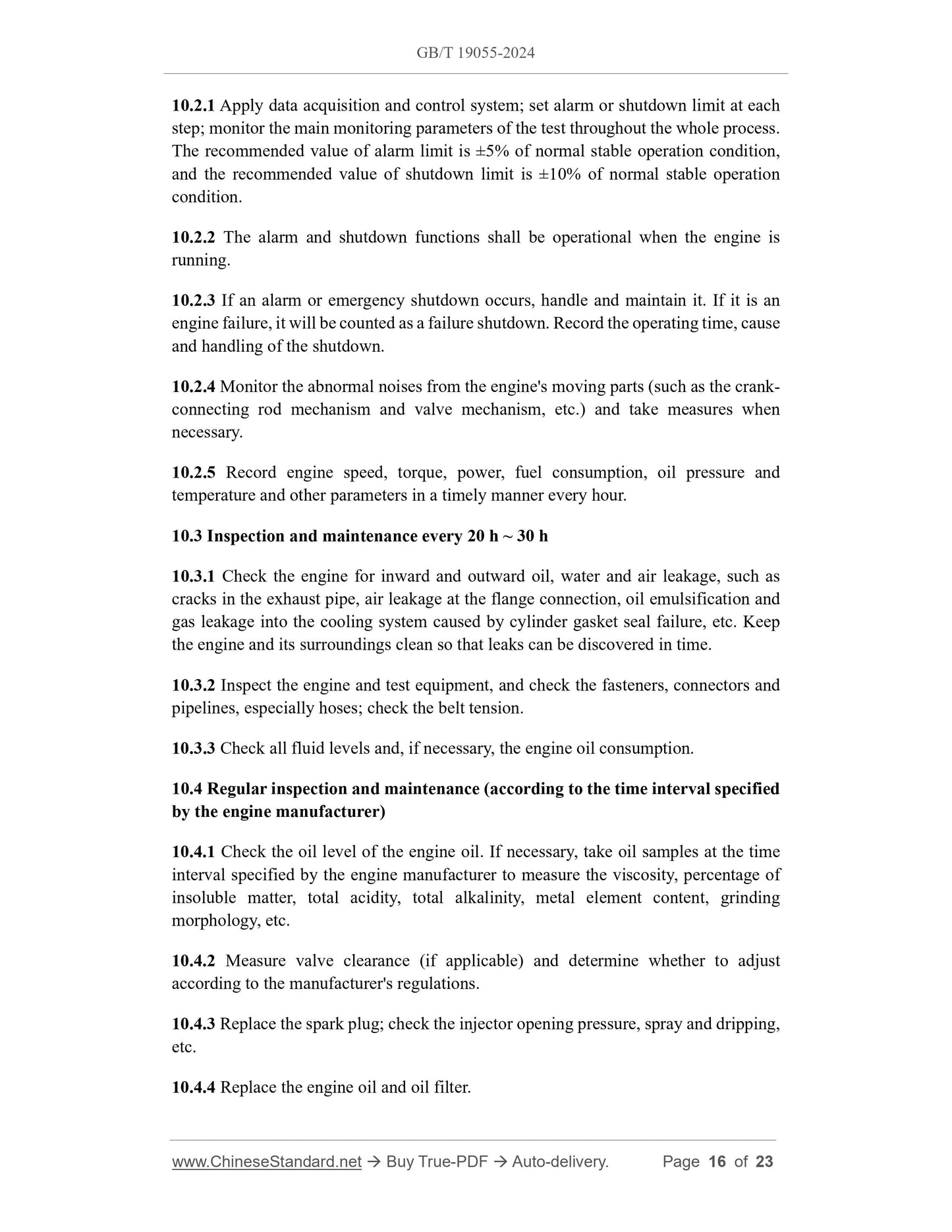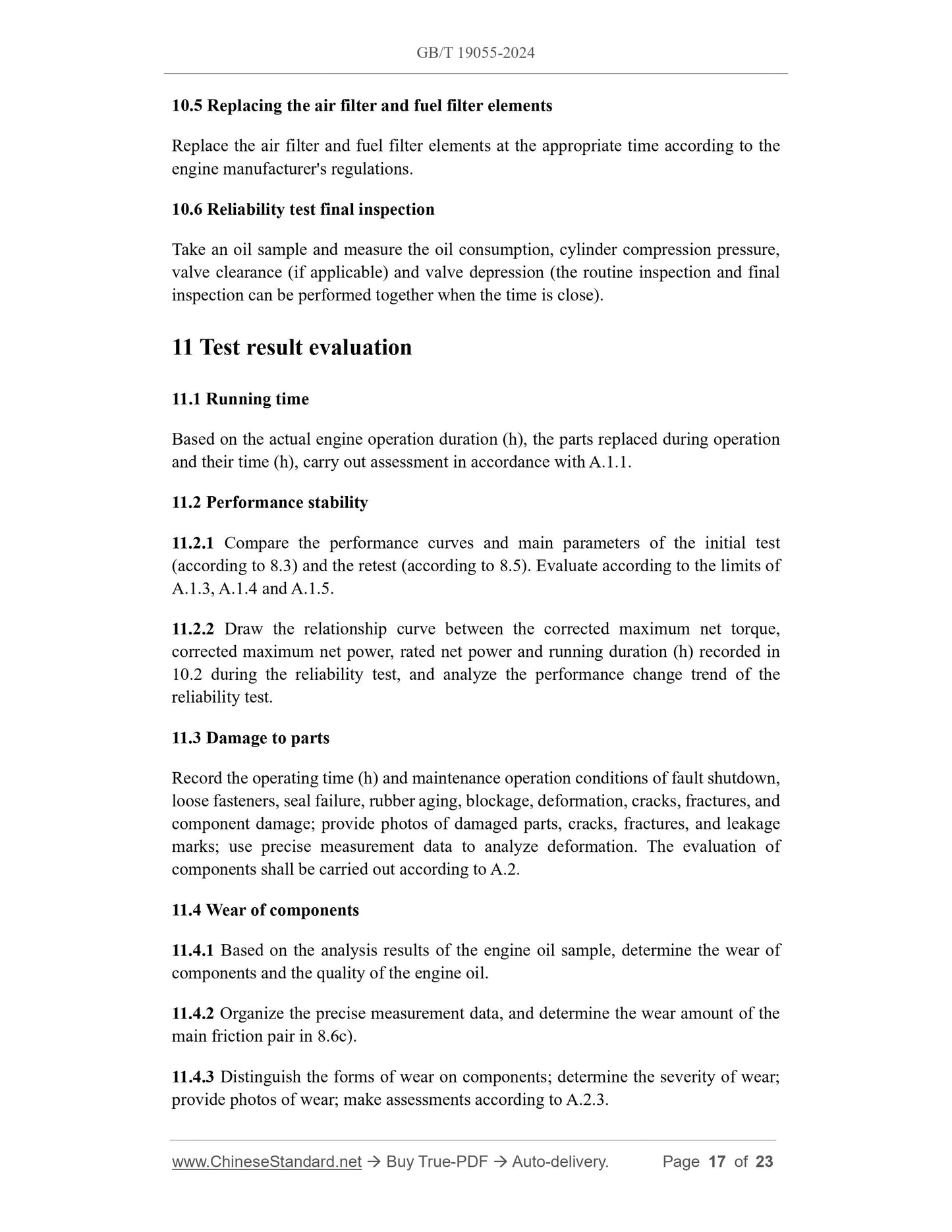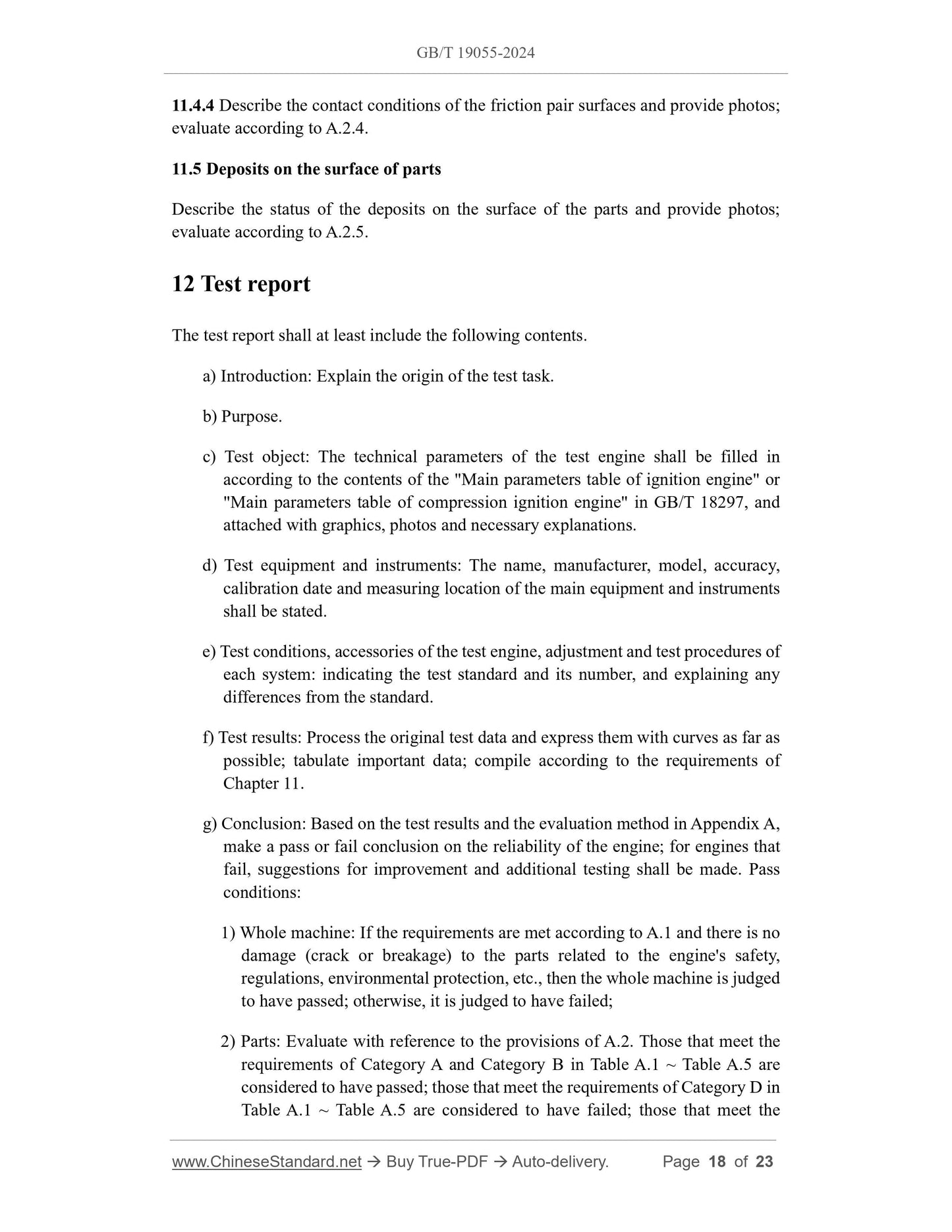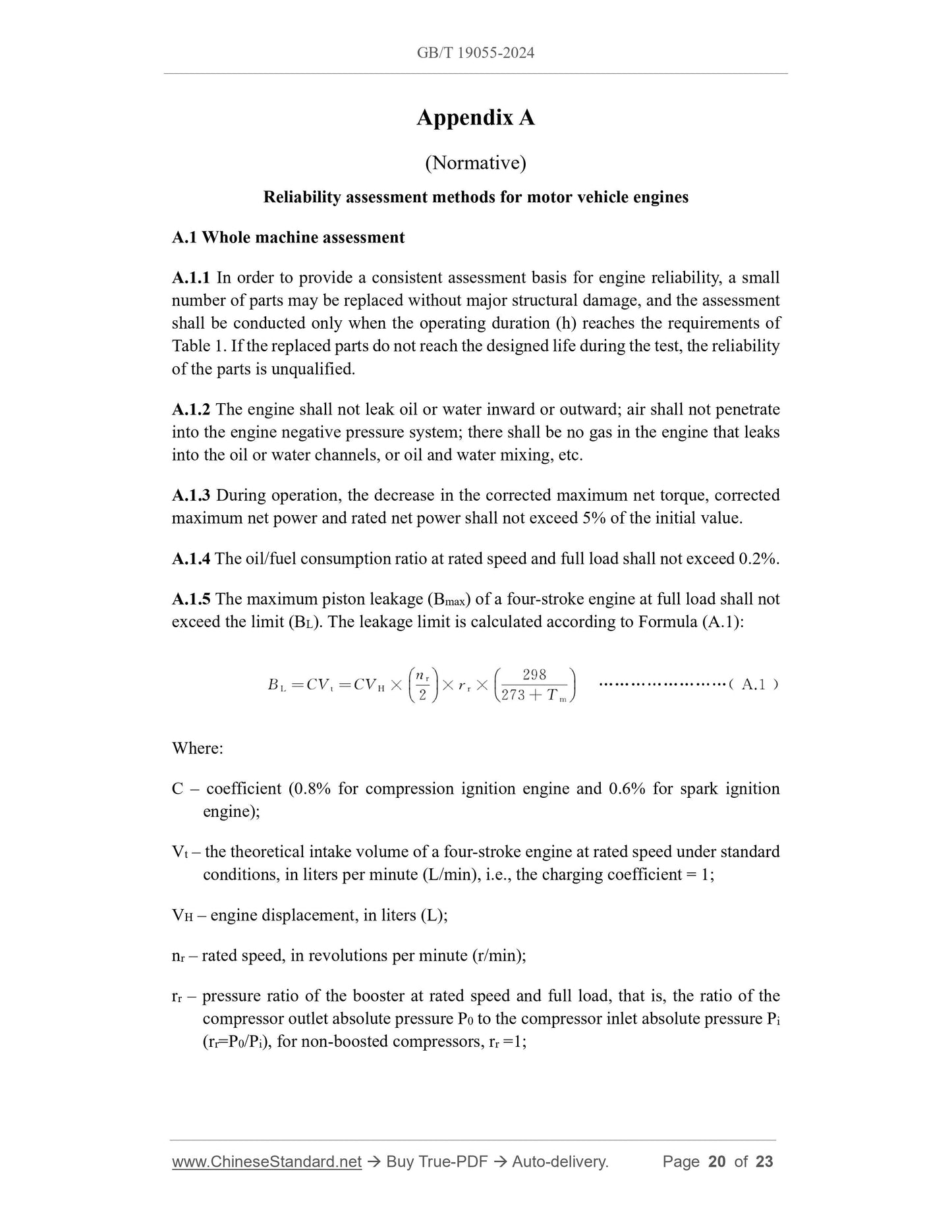1
/
of
10
www.ChineseStandard.us -- Field Test Asia Pte. Ltd.
GB/T 19055-2024 English PDF (GB/T19055-2024)
GB/T 19055-2024 English PDF (GB/T19055-2024)
Regular price
$275.00
Regular price
Sale price
$275.00
Unit price
/
per
Shipping calculated at checkout.
Couldn't load pickup availability
GB/T 19055-2024: Reliability test methods for motor vehicle engines
Delivery: 9 seconds. Download (and Email) true-PDF + Invoice.Get Quotation: Click GB/T 19055-2024 (Self-service in 1-minute)
Newer / historical versions: GB/T 19055-2024
Preview True-PDF
Scope
This document specifies the general reliability test methods and reliability assessmentmethods for motor vehicle engine bench test.
This document applies to M and N category motor vehicle engines, which are
reciprocating, rotary type, excluding free piston type.
Basic Data
| Standard ID | GB/T 19055-2024 (GB/T19055-2024) |
| Description (Translated English) | Reliability test methods for motor vehicle engines |
| Sector / Industry | National Standard (Recommended) |
| Classification of Chinese Standard | T11 |
| Word Count Estimation | 17,177 |
| Date of Issue | 2024-05-28 |
| Date of Implementation | 2024-12-01 |
| Issuing agency(ies) | State Administration for Market Regulation, China National Standardization Administration |
Share
